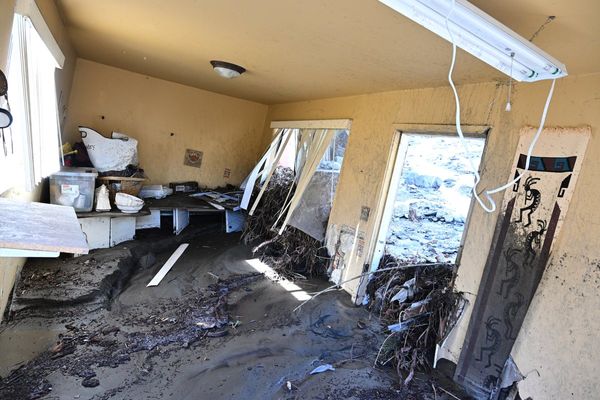
Following sudden flooding and excessive rain, hundreds of Britons are now stranded on the Greek island of Skiathos.
As a result of the floods, UK-bound flights from the island have been cancelled and police have banned traffic on the resort as record rainfall has caused at least one death.
Storm Daniel is producing significant flooding around the area, with cars being swept into the sea and streams overflowing their banks.
Greece was engulfed with extreme heat this summer, with temperatures reaching a 50-year high.
However, there is a documented link between long stretches of summer heat, thunderstorms, and the sudden changes in weather having consequences many people aren’t prepared for — including flash floods.
What is flash flooding?
Flash flooding happens when rain falls so quickly that the underlying ground can’t cope, meaning it won’t drain away fast enough. Roads become like rivers and, if there’s a lot of water, buildings can flood and cars carried away.
If the rain is falling too fast for the ground or drainage systems to cope, then there is a risk of flash floods.
How can a heatwave cause flash flooding?
Extreme hot weather risks flash floods if the water comes down too quickly for the ground to absorb it.
In an eye-opening video, Professor Rob Thompson, from the University of Reading’s meteorology department, has demonstrated what happens to water on grass that’s wet, during an average British summer, and grass that’s been dried out by a heatwave, using a cup of water.
In this experiment Dr Rob Thompson of @UniRdg_Met shows just how long it takes water to soak into parched ground, illustrating why heavy rainfall after a #drought can be dangerous and might lead to flashfloods. @R0b1et @UniRdg_water pic.twitter.com/zbb3xLTXdK
— Uni of Reading (@UniofReading) August 10, 2022
Tipping the cup of water upside down on each patch, he shows how the dried-out ground struggled to absorb any water, while the other two patches absorb it a lot faster.
Speaking to PA during UK’s heatwave last year, he said: “Britain desperately needs rain to break this drought. But we should be careful what we wish for.
“Experience around the world has shown what can happen when heavy rain follows a very dry and hot period that has baked the soil hard. The water can’t soak in easily, most of it just runs straight off the surface, which can quickly turn into flash floods.
“If you’re praying for rain, you should pray for two days of drizzle, as dreadful as that sounds.”
The Met Office has also warned about the very real threat it poses, saying: “This experiment shows how heavy rainfall following an extended period of extreme heat could lead to flooding.”
How can I protect my home from flash floods?
In order to protect your home from being at risk of flash floods, you can sign up for flash-flood warnings on the Met Office website, where they also recommend creating a flood plan, for example, moving valuables out of the cellar and to a safer place.
If you’re renovating your home, it’s recommended that you choose tiled flooring instead of carpets and that you move plug sockets further up the wall.
A full list of recommendations includes:
- Sign up for flood alerts on phone, email, or text, which are available in England, Wales, and Scotland, and come directly from the Environment Agency.
- Move valuables to a higher level in the house.
- Take detailed photographs of your property to register your claim with your insurance company.
- Use thick plastic sheeting to cover up any air vents, as these are a common entry route for floodwater.
- Avoid walking in water that could be contaminated with sewage.
- If you leave your home during a flood, turn off your mains water and electricity.
- Avoid driving on flooded roads.







